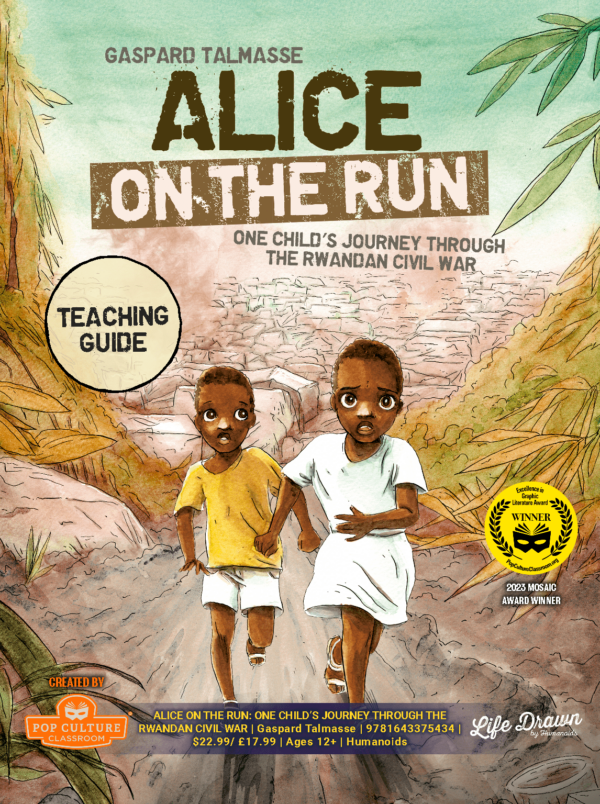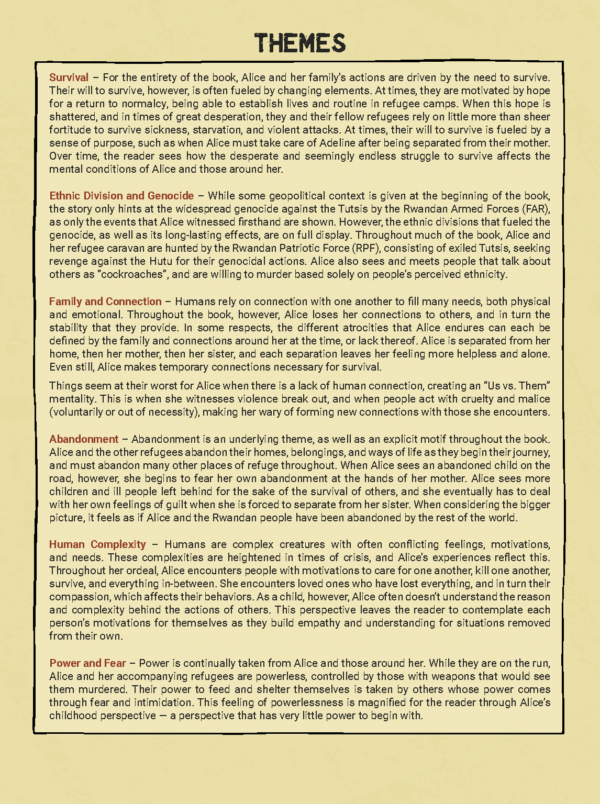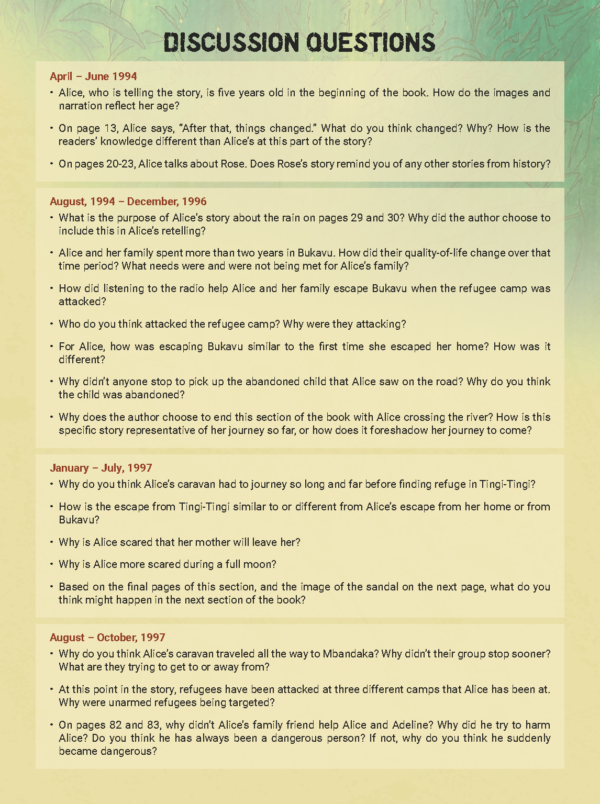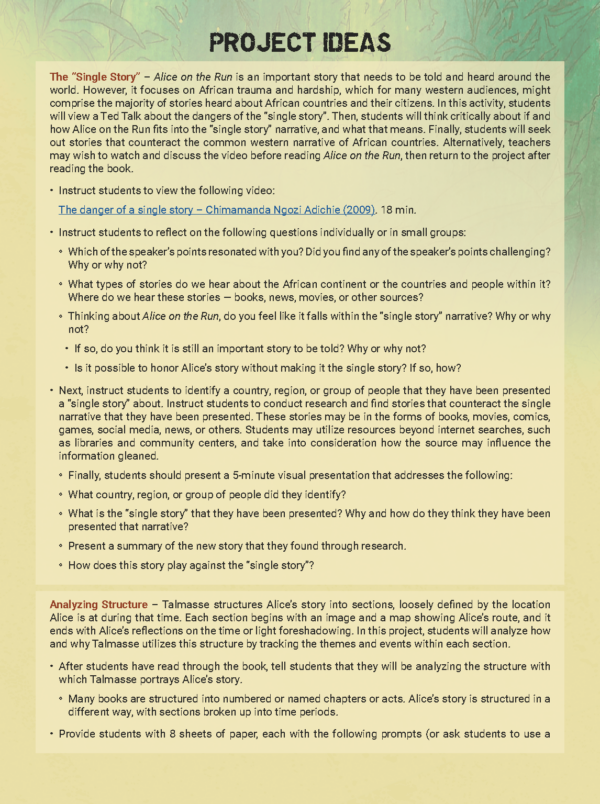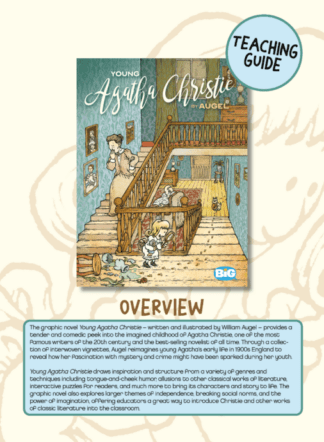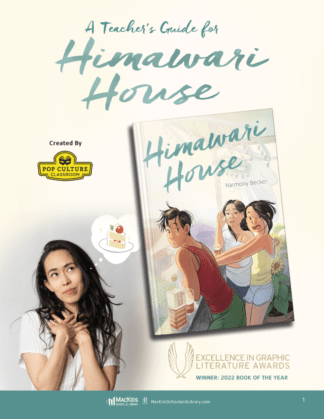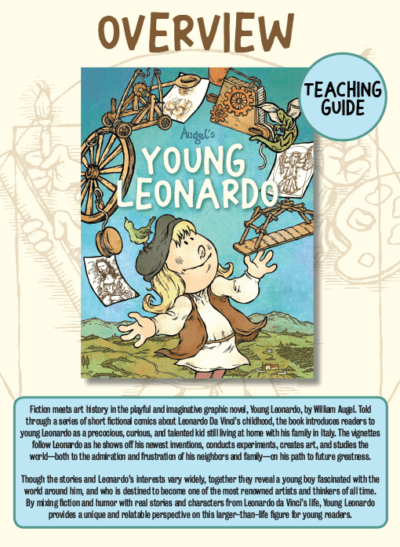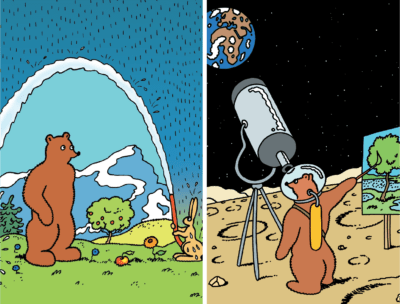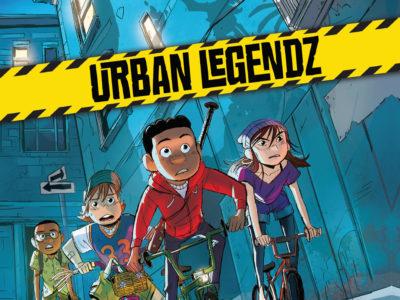Alice on the Run: One Child’s Journey Through the Rwandan Civil War Teaching Guide
Alice on the Run: One Child’s Journey Through the Rwandan Civil War Teaching Guide
FREE - Suggested Donation: $2-$5
Teach using Alice on the Run: One Child’s Journey Through the Rwandan Civil War — winner of Pop Culture Classroom’s Excellence in Graphic Literature Mosaic Award in 2023!
Alice on the Run: One Child’s Journey Through the Rwandan Civil War is the “thoughtful recounting” of Alice Cyuzuzo’s memories from ages five to fourteen; a period when she was escaping the atrocities in and around Rwanda beginning in 1994.
Pop Culture Classroom’s teaching guide for Alice on the Run — aligned to Common Core standards for grades 6-10 — explores the book’s themes, characters, and settings. The teaching guide also includes:
- Discussion Questions
- Project Ideas
- Additional Media Pairings for the Graphic Novel
Alice on the Run provides students with the opportunity to understand and grapple with human experiences that can be glossed over when learning about history in a geopolitical context. Through the book and its teaching guide, students can learn about important historical events from a part of the world not often talked about in traditional schooling, giving students a more-rounded worldview.
This window into Alice’s lived experience allows students to develop empathy for people and circumstances that are far removed from their own and shows the severe and urgent factors that might cause someone to seek refuge in another country.
2023 Excellence in Graphic Literature Awards Winner
Alice on the Run: One Child’s Journey Through the Rwandan Civil War was awarded the Excellence in Graphic Literature Mosaic Award in 2023. This award celebrates stories about and from diverse communities, ethnicities, nationalities, faiths, and identities. Learn more about the Excellence in Graphic Literature Awards and see more winning titles!
Content Warning
Students will view events as Alice experienced them, including harrowing scenes of incomprehensible hatred and violence amongst sparse moments of hope. The book’s images are rendered tastefully and never cross the line into gore. However, they depict real-life mass murder in the form of genocide, and themes of grief and despair are prevalent throughout.
The book should be discussed with empathy, sensitivity, and — particularly in classrooms that may contain students who are refugees — trauma-informed pedagogy and care.


